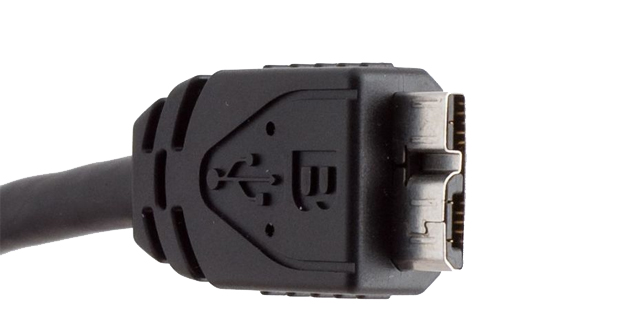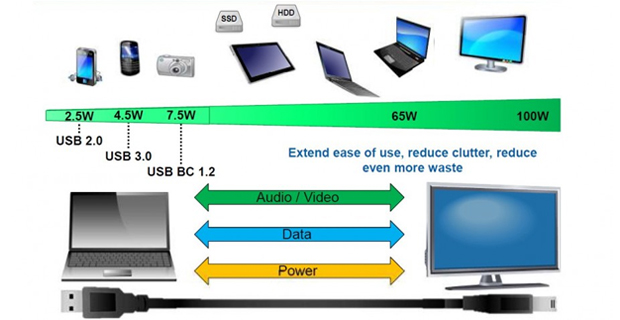
Are you trying hard to work your head around micro B connections, USB 3 mini, or other innovative devices? Then you should stay tuned, as the next connector is already being developed and perfected. We don’t know exactly how it will look like, especially since there aren’t any available prototypes yet. But we do know that it is going to be reversible.
Jeff Ravencraft, a member of the USB Implementers Forum, claims we will no longer have to worry about the plug’s orientation, or the cable’s different ends. No matter how you plug it, it will still work perfectly. Furthermore, whether it’s an A or B cable type will no longer be important. Isn’t that great news?
Its size will be very similar to the size of a USB micro B connection. What does this imply? Well, it means that your phone’s socket will no longer take up any space. In addition, according to Jeff Ravencraft, tablets, phones, and PC manufacturers intend to implement it to all their new devices.
The EU and China intend to pick it up as an authorized charging standard for all types of phones and other similar electronic devices. USB micro B connectors have already been adopted as charging standards by both of them. This is going to be amazing, as you will no longer need a different charger for each phone you buy.

This is great news as we will no longer have to put up with endless cable changes for a good while. The plan is for this design to be used for various USB generations at much higher speeds. According to Jeff Ravencraft, it will move up for both performance and power, and it will need to successfully move up beyond 20Gbit/second data speeds. The connector will have to be able to support that speed. The new connector will, more than likely, be rated for 100W. Our expectations do not really go beyond that power, mainly due to safety regulations and due to the fact that the newest laptop models use less power to get charged.
There are quite a few interesting theories about what might be hiding on the plug’s other end as well. A researcher from the University of Berkeley is currently trying to figure out how to connect a solar panel using a USB. Once they reach 100W, any USB cable could power almost anything, from a TV screen, to a sewing machine, or a simple phone.
20Gbps USB won’t be available for a while. However, SuperSpeed 10Gbps connectors will be available for shipping this year. That represents almost double the speed of today’s USB, which is 5Gbps. The connection even has less overhead. According to Jeff Ravencraft, during testing, engineers got to see a 9.7Gbps throughput on 10Gbps connections. These connectors will function with 5Gbps and 10Gbps USB 3 hubs and devices, though at a lower speed in the case of 5Gbps devices. Even more, USB 2 devices could also be plugged in.
So what would you need 10Gbps for anyway? DisplayLink will probably use it to dock stations able to drive 4K screens, re-emplacing the two 2560 x 1600 screens common USB docks can currently handle. You will be able to transfer your data and power your device using one single cable. DisplayLink also functions with Rohm, putting 100W USB power in its chipset. This will make it easier for manufacturers who are currently using DisplayLink chips for their docks – such as Lenovo, Dell, or Targus – to ship out 100W USB3 SuperSpeed docks.
Jeff Ravencraft foresees that the first SuperSpeed 10Gbps items will be monitors that will use it to connect video and audio, storage, faster USB hubs that will allow you to plug more than one single device into it, and USB hubs that will allow you to connect various 5Gbps devices simultaneously, without losing speed. According to Jeff Ravencraft, you will be able to transfer video and audio from a notebook directly to a monitor, at the same time getting power back from the dock to keep the notebook running.
After this experience, the following USB connector might as well be wireless, or even look like Ethernet. Anything else your imagination can think of is possible. This happens simply because the USB specification that is currently under development practically represents a way of disposing of a USB connection without the need of a USB cable. Jeff Ravencraft explains that docking stations and wireless devices will be able to communicate via USB, without the need of a physical connection. We will be able to have a device out there, communicating over WiGig or Wi-Fi, but it will look like if it were right there, connected by a real USB cable. That will remotely give you access USB connections to peripherals. Or, even more, encrypted connections to remote storages, identified as a USB by your PC or laptop.
WiGig, the wireless gigabit reference point, has already made USB Implementers Forum its new home. Ravencraft promises that they are working hard to ensure that this one is the real USB experience that will go beyond 60Gbps radio.
Once the connection is virtualized, it could practically work over anything. It would be compatible with wireless USB, WiFi, and WiGig. It could even run over Zigbee, or do USB over fibre. You could easily use it to support UWB radios as well.
As you can see, the U in USB comes from ‘universal’.
